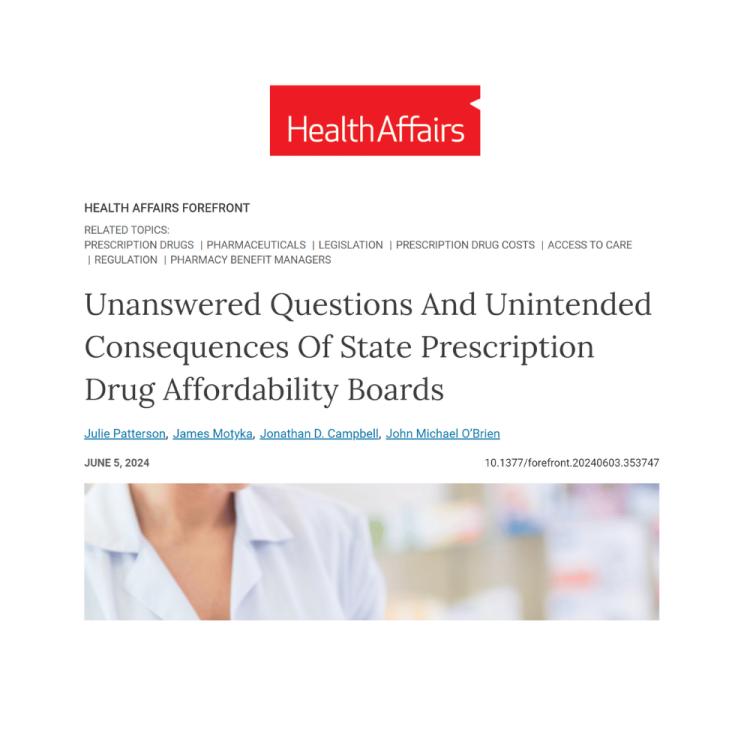AUTHORS
Julie A. Patterson, PharmD, PhD, James Motyka, PharmD, Jonathan D. Campbell, PhD, MS, and John Michael O’Brien, PharmD, MPH
PUBLICATION
OVERVIEW
Since2019, states have enactedprescription drug affordability boards (PDAB)with the asserted intention of lowering drug spending and improving affordability for patients. Variability across states and uncertainty surrounding the implementation of PDAB processes raise questions about the downstream consequences of state governments setting maximum reimbursement rates for drugs purchased in their state. The policy relevance of these questions is heightened as more states debate PDAB legislation, ongoing litigation challenges aspects of PDAB constitutionality, and states with PDABs begin ill-defined affordability review processes and rulemaking that seek to cap drug prices by limiting reimbursement for specified drugs across state-run and/or state-regulated health plans.
In this article, we describe key components of PDAB legislation in four states — Colorado (2021and2023),Minnesota, Maryland, and Washington because these states have passed legislation giving PDABs the purported authority to set upper payment limits (UPL) for prescription drugs deemed “unaffordable.” The authorities granted to PDABs in other states vary, from recommending policies to reach spending targets for specific drugs or negotiating supplemental Medicaid rebates, to conducting affordability reviews while developing a plan for establishing UPLs.
For the four UPL-setting states, we summarize the boards’ structures, the criteria to identify and select eligible drugs, and the processes for affordability reviews and UPL determination. This review focuses on legislation as opposed to implementation, given significant differences in the degree to which states have begun promulgating regulations and implementing policies and reviews. We highlight similarities and variabilities in existing legislation as well as uncertainty and potential unintended consequences amidst the rapid rise of PDABs.

